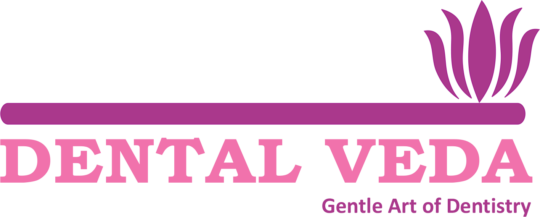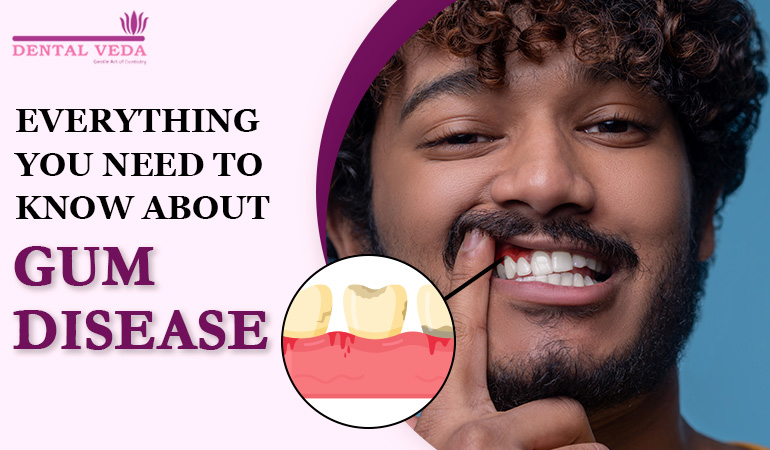Do your gums bleed when you brush? Do you have red or swollen gums? If yes, this might be the early signs of gum disease.
Gum disease is the inflammation or infection of the tissue that holds teeth. During the early stages of gum disease, the infection may be limited to your gums. It can cause swelling, redness, and irritation to the gum around your teeth. This condition is known as gingivitis.
However, when gingivitis is left untreated, the infection may become more severe and spread below your gum line to infect the bone. This stage is called periodontal disease or periodontitis. Periodontitis can result in damage to the bone supporting the teeth and teeth loss.
Gum disease is preventable and treatable at an early stage. To detect the infection and get the right treatment for gum disease, you need to understand more about it. Here is everything you may need to know about gum disease – causes, symptoms, diagnosis, prevention, and treatment.
What causes gum disease?
The mouth is always full of bacteria. These bacteria combine with mucus to form a colorless layer on your teeth, known as plaque. Brushing your teeth regularly can help remove this plaque from your teeth. However, if the plaque is not removed regularly, it accumulates on your teeth and hardens into a yellow substance called tartar or calculus.
The accumulation of tartar on your teeth can spread below the gum line, making it difficult to clean the teeth. Brushing and flossing will be insufficient to clean the tartar, and you may require professional cleaning to remove it.
This build-up can cause gum infection or gingivitis, leading to irritation and inflammation of the gum. When left untreated, gingivitis may become severe and lead to periodontitis. In periodontitis, the gum may move away from the teeth, leaving small gaps between teeth and gums. Food and plaque can accumulate in these gaps or pockets, creating a perfect environment for infection to develop and grow.
Apart from this, there are some factors that can lead to a gum infection in your mouth:
- Poor oral hygiene
- Diabetes
- Inadequate nutrition and eating foods with high sugar and processed carbs
- Conditions that interfere with the immune system, such as leukemia, HIV, and cancer
- Medications that can cause dry mouth and affect oral health
- Hormonal changes during puberty, pregnancy, and menopause
- Genetics
- Smoking
- Chewing tobacco
What are gum disease symptoms and signs?
Many gum disease symptoms may take time to show up. Hence, you may have gum disease without knowing it. However, as the condition worsens, certain signs and symptoms may appear, indicating the development of infection in your gums, such as:
- Bright red and swollen gums
- Gums bleed while brushing
- Receding gums
- Persistent bad breath
- Sensitive teeth
- Experiencing pain when chewing food
- Formation of gaps or pockets between teeth and gums
- Loose teeth
- Mouth sores
What is the best treatment for gum disease?
The treatment of gum disease depends on its severity. At the early stage, gingivitis can be reversed by practicing proper oral hygiene and getting a professional cleaning to remove plaque and tartar.
More severe forms of gum disease may require extensive treatment. This may include a deep cleaning of root surfaces beneath the gums.
Your dentist may also recommend scaling, which can help remove tartar below and above the gum line. They may also recommend root planning. In this, the rough surfaces of the tooth roots are smoothened, helping teeth reattach with gums. Patients with more severe cases of periodontal disease may require corrective gum surgery.
How to prevent gum disease?
Gum disease is entirely preventable. You can prevent gum disease by following these steps:
1. Maintain proper oral hygiene: Incorporate healthy oral hygiene habits to reduce the accumulation of plaque and tartar on your teeth. Brushing your teeth twice a day can remove plaque from your teeth. Moreover, change your brush every three months or earlier if its bristles are frayed. Flossing will remove food particles and plaque under the gum line and between teeth. Your diet is another essential part of oral care. Eat healthy food having low processed carbs and sugar.
2. Regular checkups: Schedule regular checkups with your dentists every six months. Gum diseases may become more common with age. Professional oral health checks can help you reduce the risk of gum disease.
Professional cleaning: Accumulation of tartar on your teeth cannot be removed with brushing and flossing. Get professional cleaning twice a year to remove plaque and tartar accumulation.
3. Quit smoking: Smokers have poor oral health and are more likely to develop gum disease. Smoking weakens the immune system, making it difficult to fight off a gum infection. Moreover, smoking also reduces the ability to heal swollen and sore gums. If you smoke and experience signs of gum disease, quit smoking and practice healthy oral hygiene. Additionally, smoking can reduce the success rate of oral treatments.
4. Avoid clenching of teeth: Grinding and clenching teeth can exert an additional force on the tissues holding your teeth. This can increase the chances of tissue damage.
Are you experiencing any gum disease symptoms? Book your appointment today with Dental Veda and get the best gum disease treatment from the experts. We offer our patients top-quality and advanced dental care services to bring back their beautiful smiles.
Frequently Asked Questions
How much does gum disease treatment cost?
As the gum disease treatment will vary depending on the severity of the disease, the cost will also depend on the type of treatment. Additionally, gum disease treatment costs can also vary depending on your location.
Does gum disease cause bad breath?
Yes, gum disease can cause bad breath. Damaging bacteria that cause gum disease are called anaerobes. These bacteria cause a distinct odor known as perio breath.
Can my teeth be saved if I have gum disease?
Untreated gum disease can result in the loosening of teeth. However, with timely treatment for the condition, your dentist will be able to save your natural teeth.


